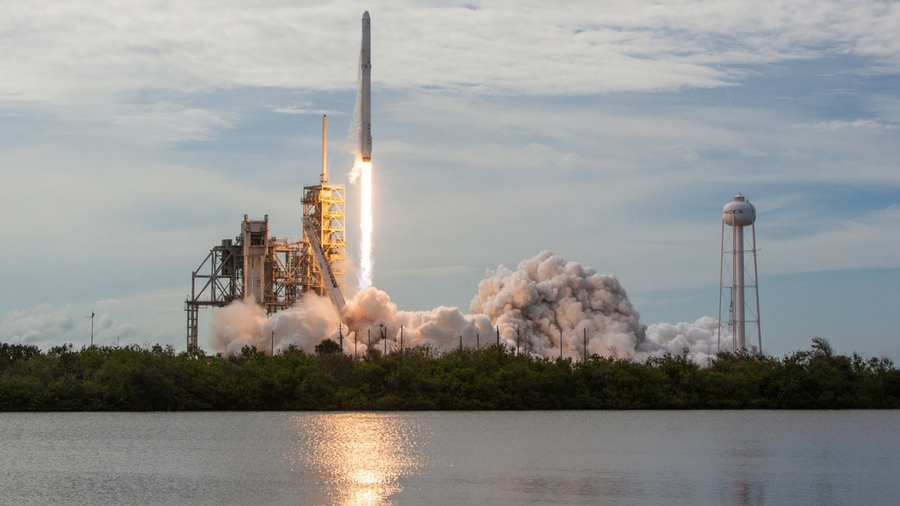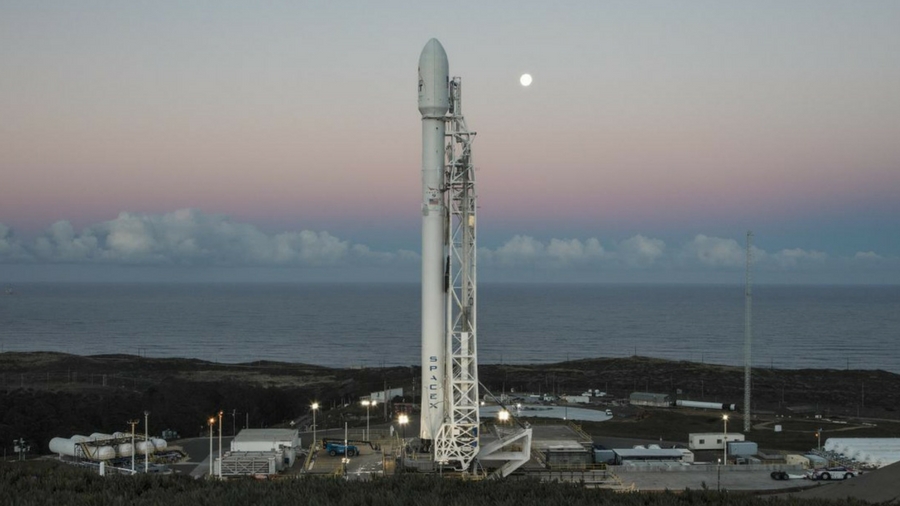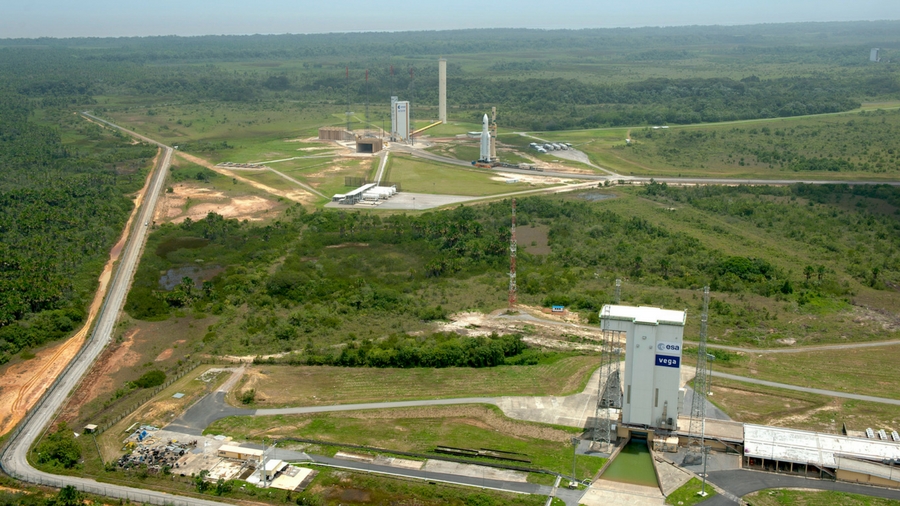Where and when to see a rocket launch (and maybe a landing too)
Witnessing a rocket launch is the ultimate tech experience

Rockets all over the world
With SpaceX now launching payloads every two weeks, and Nasa ramping up its operations, there are multiple ways to witness the ultimate in tech spectacles: a rocket launch. Florida, Virginia and California all host increasingly regular rocket launches, and it's also possible to reliably witness a launch from China, French Guiana and Kazakhstan.
There's one undisputed hot ticket in rocket launches: witnessing a take-off of the reusable SpaceX Falcon 9 rocket, the first stage of which then returns to Earth and lands, either on lands or on a drone ship. However, if you want to see the biggest and the best, there's only one place to go: Baikonur in Kazakhstan, to see a manned rocket launch to the International Space Station (ISS) – see the next slide.
You'll find a good overview of what's coming up and where at Nasa's website. Just bear in mind that launches are often postponed – but when they happen they're worth waiting for.
- Empty list

Baikonur Cosmodrome, Kazakhstan
Nasa and SpaceX can pretend all they want, but witnessing a manned launch to the International Space Station is surely the ultimate adrenalin rush for any space fan – and that only currently happens in one rather remote location. The Baikonur Cosmodrome in Kazakhstan is home to the world's most reliable rocket, the Russian Soyuz-FG, which launches about four times a year to transport two or three cosmonauts and astronauts to the ISS.
Witnessing a manned ISS launch from Baikonur is perfectly possible, but costs a lot – bank on at least €3,750 (around $4,500 / £3,300 / AU$5,800) per person for the four-day tour from Moscow, which includes flights from Moscow, a hotel for three nights, and tours of the Cosmodrome Museum. You can save a bit by choosing to see the launch of an unmanned Progress cargo spaceship bound for the ISS, which costs around half as much.
The next manned mission to the ISS is due to take place on December 27, with approximate dates for 2018 currently listed as March 10, April 25, September 8 and November 7.

Cape Canaveral, Florida
Flat, flooded and crawling with crocodiles, Cape Canaveral – aka the Space Coast, and where all Apollo missions to the Moon launched from – is the easiest place in the world to reliably witness a rocket launch.
There are two major locations on Florida's 'Space Coast'; Nasa's Kennedy Space Center (KSC) and, just next door, Cape Canaveral Air Force Station (CCAFS). Although SpaceX sometimes lands its reusable Falcon 9 rocket on a drone-ship in the Atlantic Ocean, it often launches them from KSC and lands them at CCAFS.
For SpaceX launches going from KSC's Launch Complex 39A, and for Nasa's missions upon United Launch Alliance's (ULA) Atlas V and Delta 4 rocket lifting-off from nearby 39B, there are viewing locations in public areas.
Sometimes, in addition to the Kennedy Space Center Visitor Complex's $50/$40 (adults/children) daily admission fee you can get tickets to watch a launch from the LC-39 Observation Gantry ($49), Banana Creek at the Apollo/Saturn V Center, right across the water from the launch pads ($20), or from Nasa Causeway ($40).
However, go anywhere on Cocoa Beach south of Cape Canaveral and you'll be able to witness any rocket launch – from a distance – for free. Ditto Playalinda Beach to the north, or near Titusville to the west. If you watch a SpaceX launch, expect sonic booms.
You'll find launch schedules at the Kennedy Space Center website and Space Coast Launches.

Wenchang Satellite Launch Center, Hainan, China
Thinks China's space programme is secretive? It used to be, but not any more. Constructed in the southeast of the holiday island of Hainan, Wenchang has drawn big crowds for its first three launches in 2016 and 2017, a Long March 5 and two Long March 7s.
Watching a launch from the area isn't technically difficult– it's about an hour's drive from the main city of Haikou on the coast. It's early days, and finding out the latest information about launches is tricky, but China's space program is burgeoning, and is intended to be a publicly accessible prestige project. Cape Canaveral definitely has a new rival.

Wallops Flight Facility, Virginia
Virginia's Eastern Shore is from where Orbital ATK sends its Antares rocket, carrying its Cygnus spacecraft packed with cargo, to the ISS. About four miles from the launch pads, the Nasa Visitor Center has a viewing area of benches in an open field (parking is first-come, first-served – it opens at 6am on the day of a launch).
Nasa's Wallops website advises arriving at least 30-60 minutes prior to a rocket launch window, and three or more hours prior to a large-scale mission launch window. Chincoteague Island is another place worth checking out, while the local tourism service has more information on where to watch.
You can also watch launches from Wallops at Nasa's Wallops UStream channel – here's the launch schedule.

Vandenberg Air Force Base, California
Although Cape Canaveral gets all the attention, Vandenberg AFB in California is a hotbed of one of the space industry's most exciting sights – the launch of a SpaceX Falcon 9 re-usable rocket.
There are several such launches planned in 2018 – including a quite a number for Iridium's NEXT satellite constellation – but Vandenberg also hosts launches of Atlas and Delta rockets.
There's a dedicated website with information on where to watch launches, and another listing launch schedules.

Centre Spatial Guyanais (CSG), Kourou, French Guiana
The French Overseas Territory of French Guiana in the northeast of South America may be the least visited destination on the continent, but where you launch a rocket from matters. A lot.
Kourou is near the equator at latitude 5° N, which makes it ideal for launching satellites into geostationary orbit. Since it's near the equator, which has a greater rotational speed, rockets get a boost – the slingshot effect. Basically, it can put a payload anywhere it wants, which is why, in spring 2019, the European Space Agency's (ESA) Centre Spatial Guyanais spaceport will host one of the most prestigious launches of all – the James Webb Space Telescope.
The $10 billion successor to the Hubble Space Telescope is due to launch on an Ariane-5 rocket from CSG, with the launch date having slipped from October 2018. Tickets for launches at CSG are free, and you can book viewing tickets for upcoming launches at its website.

Jamie is a freelance tech, travel and space journalist based in the UK. He’s been writing regularly for Techradar since it was launched in 2008 and also writes regularly for Forbes, The Telegraph, the South China Morning Post, Sky & Telescope and the Sky At Night magazine as well as other Future titles T3, Digital Camera World, All About Space and Space.com. He also edits two of his own websites, TravGear.com and WhenIsTheNextEclipse.com that reflect his obsession with travel gear and solar eclipse travel. He is the author of A Stargazing Program For Beginners (Springer, 2015),